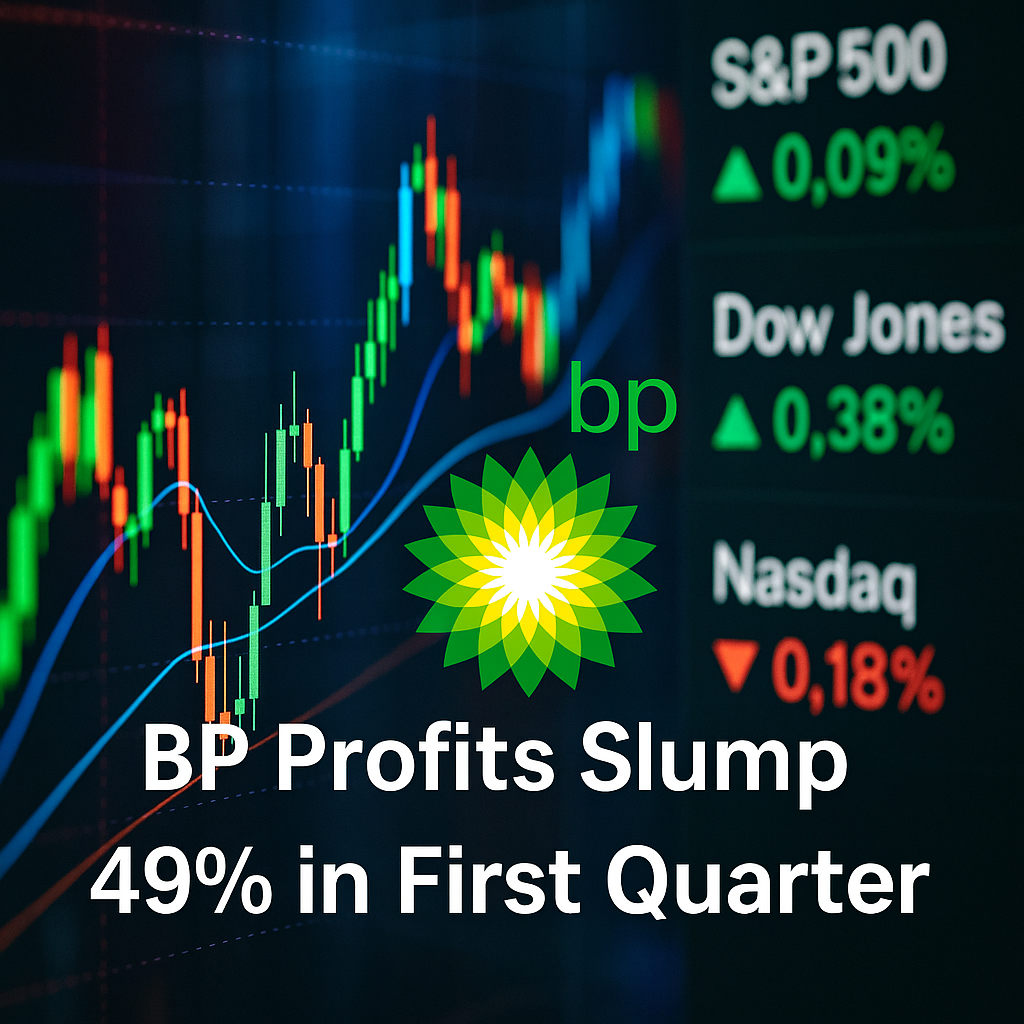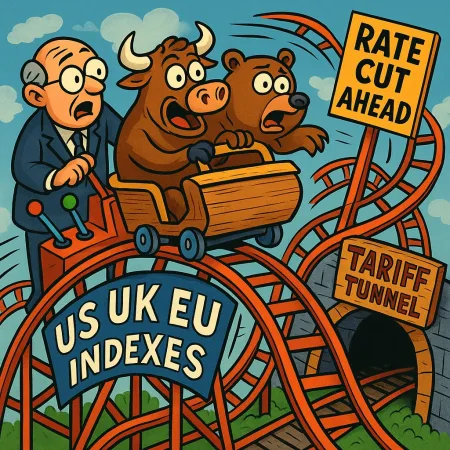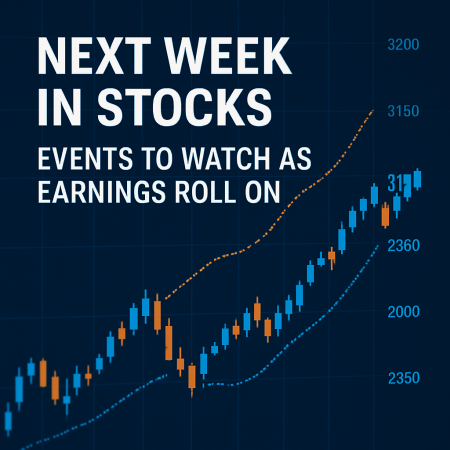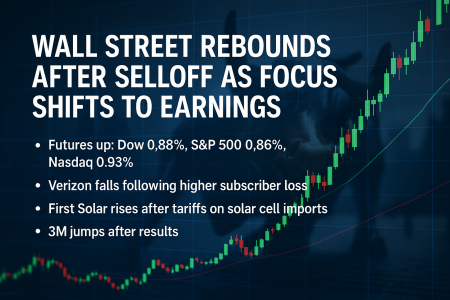Wall Street Eyes Earnings and Tariffs as BP Misses Q1 Expectations
U.S. markets kicked off a crucial week with a mixed close on Monday, as investors braced for a flurry of heavyweight earnings reports and key macroeconomic data. The S&P 500 clawed back early losses to finish just above flat, while the Dow Jones Industrial Average notched a modest 0.3% gain—its fifth straight day in the green and longest win streak of 2025. The Nasdaq Composite, pressured by early declines in tech, slipped slightly but recovered from sharper losses earlier in the session.
Markets have been buoyed in recent days by President Trump’s more conciliatory tone on U.S.-China trade relations, including hints at easing 145% tariffs that have weighed heavily on global growth sentiment. Treasury Secretary Scott Bessent added to the optimism, noting that China’s selective tariff exemptions on U.S. goods were “a positive signal.”
But despite the rebound, investor nerves remain on edge. This week brings quarterly earnings from 180 S&P 500 companies, including Big Tech giants like Apple (AAPL), Amazon (AMZN), Meta (META), and Microsoft (MSFT)—results that could determine the direction of the broader market. Key data releases will also be in focus, including the PCE inflation index and Q1 U.S. GDP, both due Wednesday, along with April’s nonfarm payrolls report later in the week.
BP Q1 Earnings: Missed Expectations Despite Operational Strength
Against this macroeconomic backdrop, British oil giant BP (NYSE: BP) delivered underwhelming Q1 earnings, missing analyst estimates as weaker crude prices and strategic recalibration efforts took a toll.
BP reported underlying replacement cost profit—its preferred metric of net income—of $1.38 billion, falling short of the $1.6 billion forecast in an LSEG-compiled consensus. That compares to $2.7 billion a year ago and $1.2 billion in Q4 2024.
The results come just two months after the company announced a major strategic reset, aiming to rebuild investor confidence following years of underperformance relative to peers like Shell and ExxonMobil. The new strategy prioritizes traditional oil and gas assets, cutting renewable energy spending in favor of boosting fossil fuel production and capital expenditures.
Despite the earnings miss, CEO Murray Auchincloss painted a bullish operational picture, highlighting the highest upstream efficiency in company history, best refinery performance in 24 years, and six successful exploration discoveries.
“We had a great operational quarter… we started out three major projects and made six exploration discoveries in a row, which is really unusual,” Auchincloss said in an interview with CNBC Europe.
BP announced a dividend of 8 cents per ordinary share and a $750 million share buyback, reinforcing its commitment to shareholder returns even amid earnings pressure. However, net debt rose to $26.97 billion, up from $22.99 billion in Q4, due in part to anticipated lower upstream production and higher capital spending.
What’s Next for BP?
BP’s Q1 results signal a company in transition. While operationally strong, the firm is betting big on legacy oil and gas as investor patience for its green energy ambitions thins. The upcoming quarters will be a test of whether this pivot can deliver the consistent profitability and capital returns shareholders demand—especially in a volatile macro environment.
Looking ahead, investors in BP will be watching:
-
The May 5 OPEC+ meeting, which could influence oil supply and price dynamics.
-
Further commentary on BP’s capital allocation strategy, especially with mounting debt.
-
Any shifts in global trade policy that might impact fuel demand or cost structures.
Conclusion:
While Wall Street juggles Big Tech earnings and critical economic data, BP’s Q1 earnings bring renewed focus on the energy sector’s balancing act between fossil fuel dependence and investor pressure for cleaner growth. For now, BP is betting that a return to its roots can power stronger returns in a turbulent market.
Check out our FX Trade Setups on our forex page.




